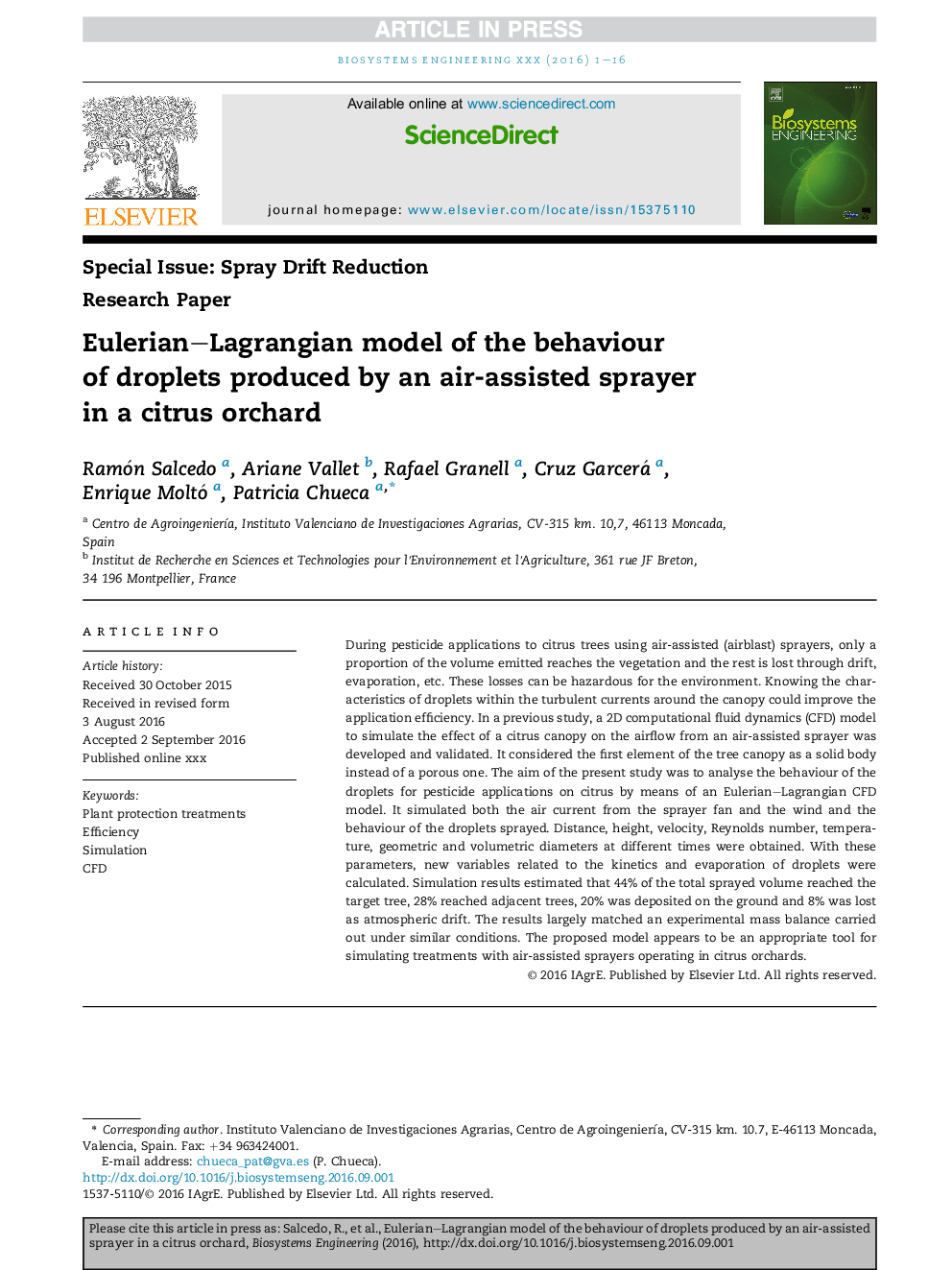| Article ID | Journal | Published Year | Pages | File Type |
|---|---|---|---|---|
| 5471852 | Biosystems Engineering | 2017 | 16 Pages |
Abstract
During pesticide applications to citrus trees using air-assisted (airblast) sprayers, only a proportion of the volume emitted reaches the vegetation and the rest is lost through drift, evaporation, etc. These losses can be hazardous for the environment. Knowing the characteristics of droplets within the turbulent currents around the canopy could improve the application efficiency. In a previous study, a 2D computational fluid dynamics (CFD) model to simulate the effect of a citrus canopy on the airflow from an air-assisted sprayer was developed and validated. It considered the first element of the tree canopy as a solid body instead of a porous one. The aim of the present study was to analyse the behaviour of the droplets for pesticide applications on citrus by means of an Eulerian-Lagrangian CFD model. It simulated both the air current from the sprayer fan and the wind and the behaviour of the droplets sprayed. Distance, height, velocity, Reynolds number, temperature, geometric and volumetric diameters at different times were obtained. With these parameters, new variables related to the kinetics and evaporation of droplets were calculated. Simulation results estimated that 44% of the total sprayed volume reached the target tree, 28% reached adjacent trees, 20% was deposited on the ground and 8% was lost as atmospheric drift. The results largely matched an experimental mass balance carried out under similar conditions. The proposed model appears to be an appropriate tool for simulating treatments with air-assisted sprayers operating in citrus orchards.
Keywords
Related Topics
Physical Sciences and Engineering
Engineering
Control and Systems Engineering
Authors
Ramón Salcedo, Ariane Vallet, Rafael Granell, Cruz Garcerá, Enrique Moltó, Patricia Chueca,
